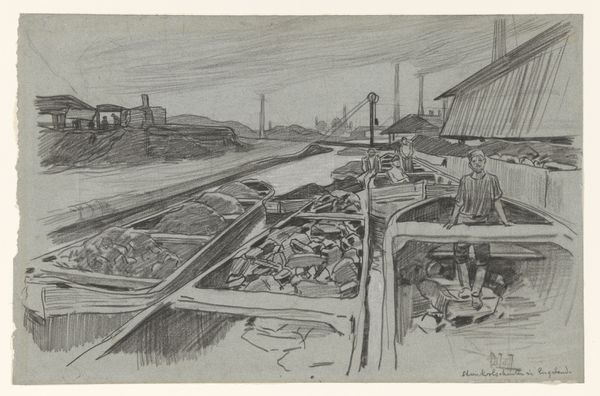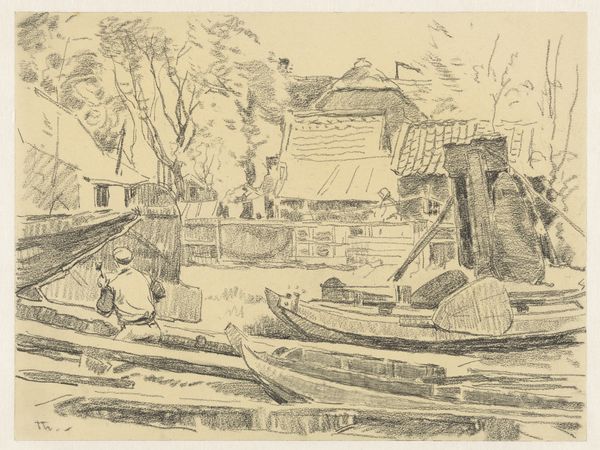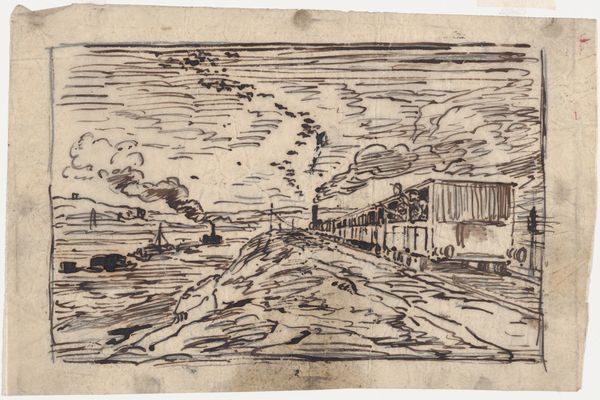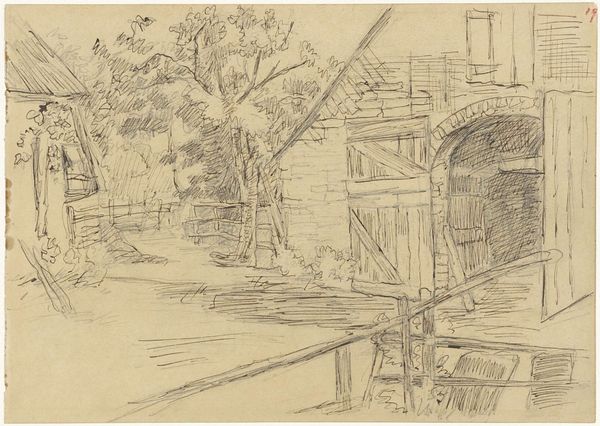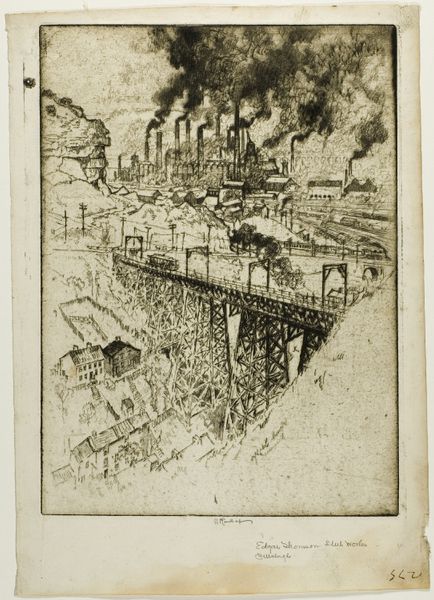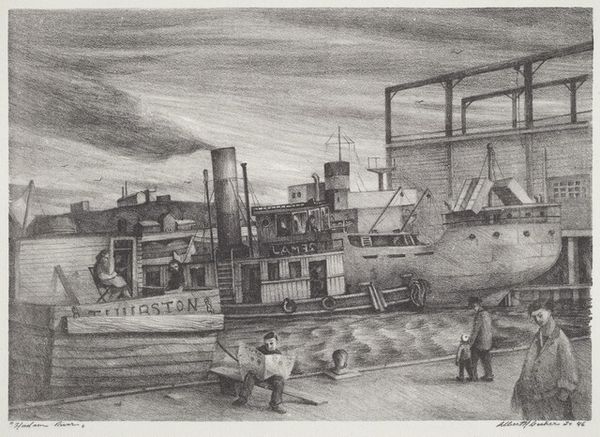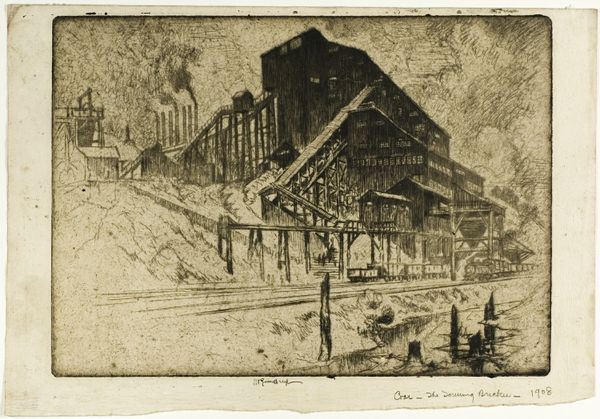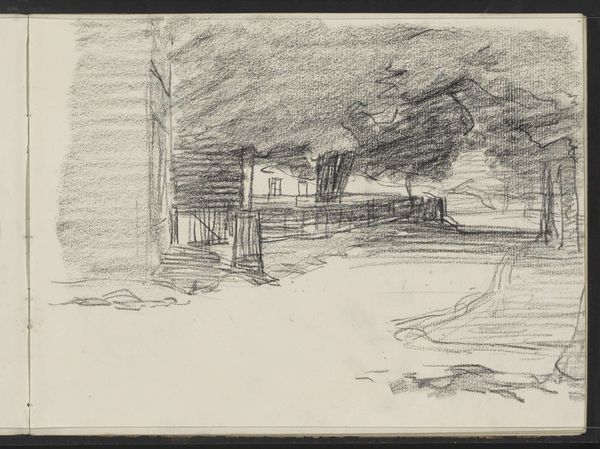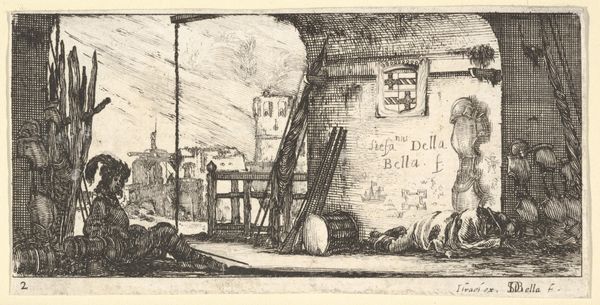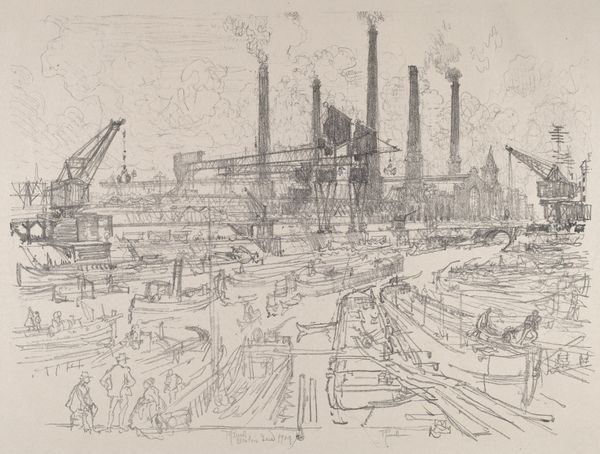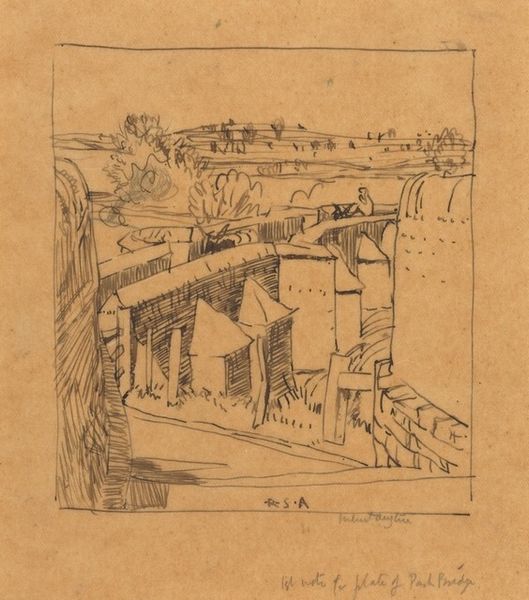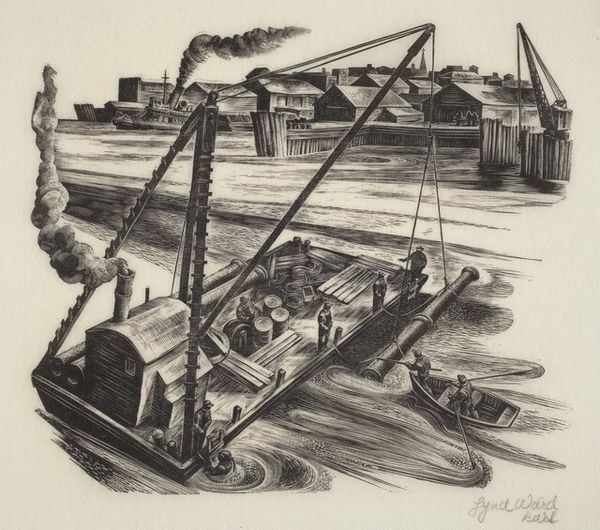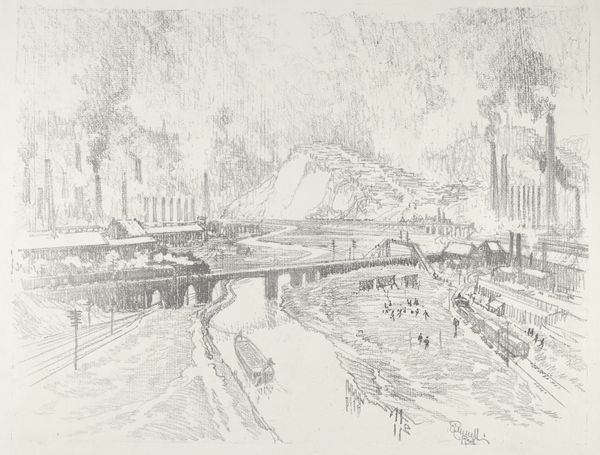
drawing, print, etching
#
drawing
# print
#
etching
#
landscape
#
cityscape
#
modernism
#
realism
Dimensions: plate: 152 x 200 mm sheet: 236 x 239 mm
Copyright: National Gallery of Art: CC0 1.0
Editor: So, here we have Cooper Nott Lansing's "Back Spur (Switcher in Hoover Yard)" from 1941, an etching depicting a bustling train yard. There's a lot of detail packed in; it almost feels gritty and industrial. What stands out to you in this piece? Curator: Immediately, I'm struck by the title, "Hoover Yard." That's a direct reference to President Hoover and, implicitly, the Great Depression. Given the date of 1941, this work exists in a specific socio-political context, reflecting the lingering effects of economic hardship alongside a sense of American industry gearing up for potential war. Do you see how the dense composition and the realism of the scene work together to evoke that sense of a nation at work, but also perhaps struggling? Editor: I do. The term 'Hoover Yard' does frame it differently. It makes me think about labor and class in that era, a critical lens through which we can examine much of the art from that time period. The artist wasn't just depicting a scene; they were documenting a social reality, right? Curator: Precisely. The choice of medium – an etching – also speaks volumes. Printmaking made the artwork reproducible and accessible, potentially allowing for wider dissemination of a particular vision or commentary on society. This challenges the notion of art for elites, emphasizing its public role. What impression does that give you of the artist's intentions? Editor: That they aimed for something broader than just aesthetics. That art could reflect, even participate in, political discourse. Curator: Exactly. Lansing captured a moment loaded with social meaning, prompting us to consider the intersection of art, labor, and political narrative. It makes you wonder about the intended audience and the impact he hoped to achieve. Editor: It really changes how I initially viewed the artwork, from a purely aesthetic appreciation to understanding its role in a broader historical conversation. Thanks! Curator: And it highlights how deeply intertwined art is with its time and place. Food for thought.
Comments
No comments
Be the first to comment and join the conversation on the ultimate creative platform.
